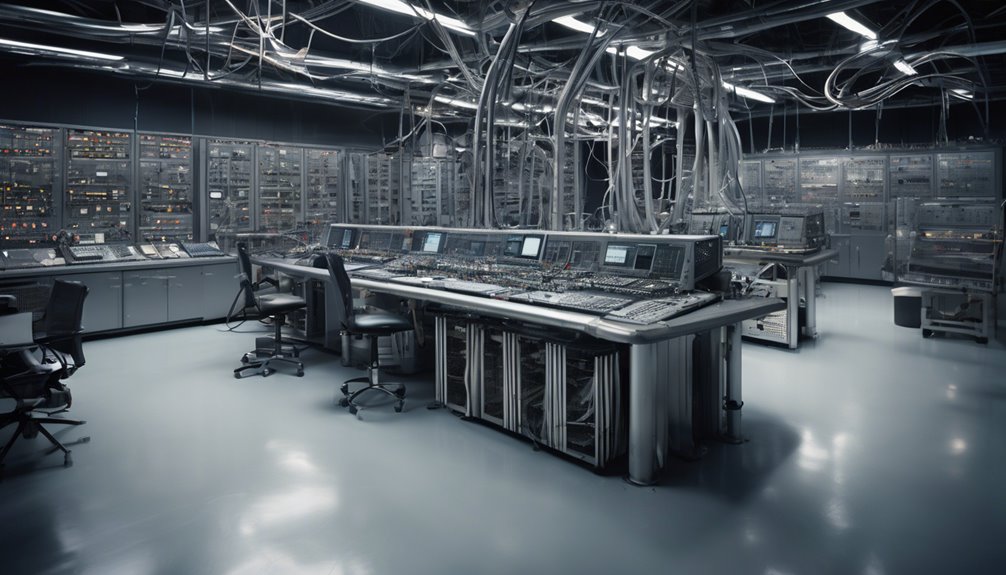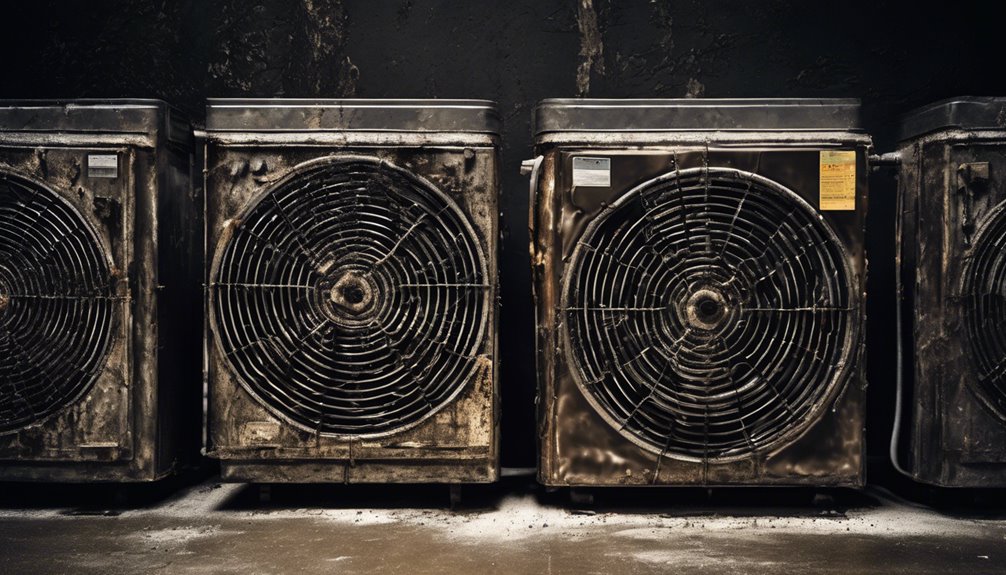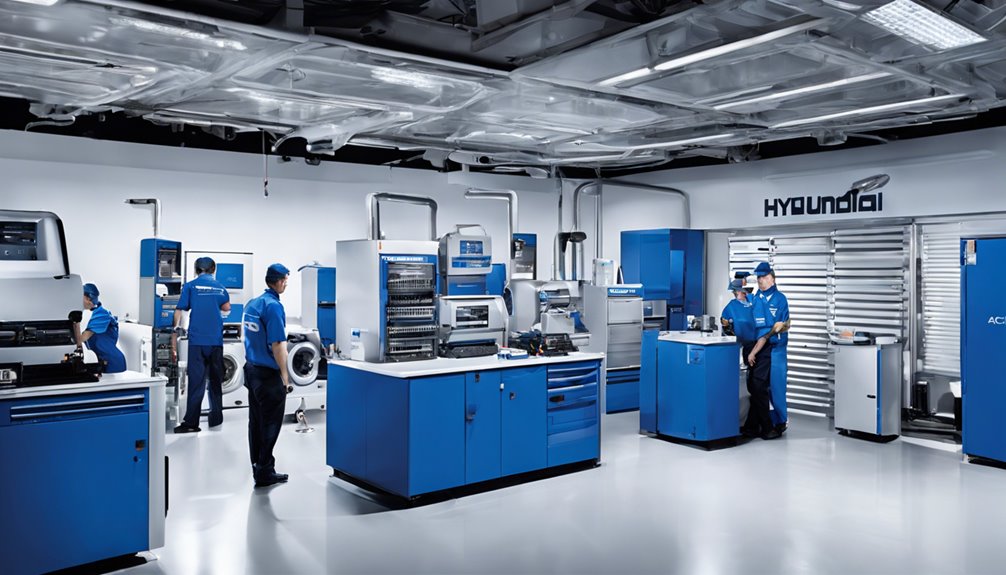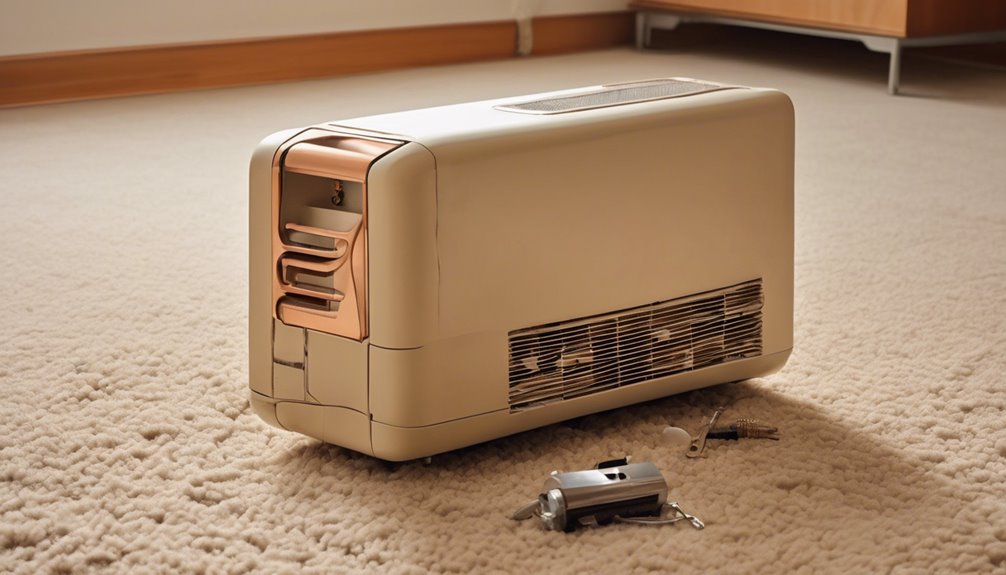You're not alone if your devices or systems are plagued by AC noise and vibration issues. These problems can cause errors, disruptions, and even complete system failures. Identifying the root cause is key to finding an effective solution. From pinpointing unusual sounds or vibrations to monitoring performance metrics, there are ways to tackle these issues head-on. Stay ahead of the game by understanding the impact of EMI and RFI, and learn how to implement noise reduction and vibration isolation strategies to ensure reliable operation and maintain system integrity – and that's just the starting point.
Key Takeaways
- Identifying the root cause of AC noise is crucial to finding an effective solution, and vibration measurements can help pinpoint the source.
- Regular performance checks and noise mapping can help identify areas with high noise levels and potential sources of the problem.
- Electrical interference from EMI and RFI can cause errors and disruptions, and identifying and mitigating them is essential to ensure reliable operation.
- Scheduled maintenance plans and regular monitoring can help stay on top of routine maintenance tasks and reduce downtime.
- Accurate AC noise measurement relies on specialized equipment and techniques to capture and process noise data effectively.
Understanding AC Noise Sources
When you're dealing with AC noise problems, identifying the source of the noise is crucial to finding an effective solution.
You need to pinpoint the root cause of the issue to effectively eliminate it.
Acoustic emissions from mechanical devices, such as pumps, motors, and generators, can be a significant source of AC noise.
These devices can produce vibrations that convert into noise, which can then be transmitted through the air or structures.
Additionally, electrical hum from power lines, transformers, and other electrical equipment can also contribute to AC noise problems.
The Impact of EMI and RFI on Devices and Systems
As you pinpoint the source of AC noise, you'll likely uncover that electrical interference from EMI and RFI is also at play, affecting your devices and systems.
Electromagnetic interference (EMI) and Radio frequency interference (RFI) can cause errors, disruptions, and even complete system failures. These interferences can be radiated or conducted, and can originate from sources such as motors, generators, and transmission lines.
You might notice symptoms like data corruption, equipment malfunction, or strange behavior in your devices and systems. It's essential to identify and mitigate EMI and RFI to ensure reliable operation and maintain system integrity.
Vibration-Induced Failures in Mechanical Systems
How do mechanical systems respond to vibrations? You might think they're built to withstand them, but the truth is, vibrations can be devastating.
When a mechanical system is subjected to vibrations, it can lead to mechanical resonance, where the system's natural frequency aligns with the vibration frequency. This amplifies the vibrations, causing excessive stress on the system.
Mechanical resonance occurs when a system's natural frequency aligns with vibration frequency, amplifying stress and threatening system integrity.
Over time, this stress can lead to fatigue failures, where the repeated loading and unloading of the system's components cause them to break down. As a result, you may experience premature wear, reduced performance, and even complete system failure.
It's essential to address vibration-induced failures in mechanical systems to prevent these costly and potentially catastrophic consequences.
Industry-Specific Consequences of AC Noise and Vibration
Across various industries, AC noise and vibration take a significant toll on equipment, personnel, and ultimately, the bottom line.
You face industry risks like reduced productivity, equipment downtime, and compromised product quality. In manufacturing, for instance, AC noise can lead to inaccurate measurements and defective products.
In the oil and gas sector, vibration can cause pipeline leaks and explosions. Moreover, you're responsible for ensuring regulatory compliance with industry standards and government regulations.
Failure to do so can result in hefty fines, damage to your reputation, and even legal action. It's crucial to address AC noise and vibration issues proactively to minimize these consequences and maintain a competitive edge in your industry.
Identifying AC Noise and Vibration Problems
You're likely aware that AC noise and vibration problems can be complex and multifaceted,
but to tackle them, you need to identify the root causes of vibration and pinpoint the sources of noise.
This involves analyzing the signals generated by your equipment to understand what's happening and where.
Causes of Vibration
Vibration problems in AC systems often stem from a variety of sources.
As you investigate the cause, you'll want to take vibration measurements to identify the root of the issue. This involves pinpointing the vibration sources, which can include loose or worn belts, misaligned couplings, or unbalanced motors.
You may also find that resonance is a contributing factor, where the natural frequency of a component matches the frequency of the vibration, amplifying the problem.
Noise Sources Identification
Identifying the source of AC noise and vibration problems is crucial to developing effective solutions.
You need to pinpoint the exact location and type of noise or vibration to address the issue effectively. One way to do this is through noise mapping, which involves creating a visual representation of the noise levels in your facility or equipment.
This helps you identify areas with high noise levels and potential sources of the problem. Sound profiling is another technique that can help you identify the specific frequencies and patterns of the noise, allowing you to determine the root cause of the issue.
Signal Analysis Methods
With noise sources pinpointed, it's time to dig deeper into the signal itself.
Now, you'll need to analyze the signal to understand its characteristics and identify patterns.
In signal analysis, you have two primary methods: Time Domain and Frequency Analysis.
In the Time Domain, you'll examine the signal's amplitude versus time, which helps you identify sudden changes, transients, or oscillations.
This method is useful for detecting anomalies in the signal.
Frequency Analysis, on the other hand, involves breaking down the signal into its component frequencies, allowing you to identify specific frequency ranges that contribute to the noise problem.
Measurement and Analysis Techniques
You'll need to accurately measure and analyze AC noise to effectively diagnose and mitigate its impact on your system.
This involves using specialized equipment and techniques to capture and process noise data.
Accurate AC noise measurement relies on specialized equipment and techniques to capture and process noise data effectively.
- You'll be able to identify patterns and trends in noise levels over time with data logging, helping you pinpoint problematic periods.
- Frequency response analysis will reveal how different components in your system respond to various noise frequencies, allowing you to target specific areas for improvement.
- By examining noise data in both the time and frequency domains, you'll gain a comprehensive understanding of your system's noise behavior, empowering you to take informed corrective action.
Noise Reduction and Vibration Isolation Strategies
Now that you've gathered and analyzed AC noise data, it's time to put that information to use by implementing noise reduction and vibration isolation strategies.
Your goal is to minimize the impact of AC noise on your equipment and operation. You can achieve this by using soundproofing materials to absorb or block the noise.
Another approach is to deploy active damping techniques to counteract the vibrations. By combining these strategies, you can significantly reduce the AC noise and vibration levels.
Effective noise reduction and vibration isolation will help you improve equipment reliability, reduce maintenance costs, and increase overall efficiency.
Implementing Effective AC Noise and Vibration Solutions
Implementing effective AC noise and vibration solutions requires a thorough understanding of your specific operational environment and the sources of the noise.
You need to identify the root causes of the problem to develop a comprehensive solution.
By using acoustic modeling and system optimization techniques, you can design a tailored solution that meets your unique needs.
This might involve:
- Identifying and mitigating potential noise sources before they become major issues
- Optimizing system components to reduce vibration and noise transmission
- Creating a noise-reducing system that integrates seamlessly with your existing infrastructure
Best Practices for Ongoing Maintenance and Monitoring
You've implemented effective AC noise and vibration solutions, but your work isn't done yet.
Now, it's essential to establish a routine of regular performance checks to ensure your solutions continue to operate efficiently.
Regular Performance Checks
Regular performance checks are crucial to identifying AC noise problems before they escalate into major issues.
By regularly checking your equipment's performance, you can catch potential problems early on and prevent costly downtime.
You should be checking your equipment's calibration regularly to ensure it's producing accurate results.
Additionally, you need to be tracking performance metrics such as vibration levels, temperature, and pressure to identify any anomalies.
Some key things to check include:
- Is your equipment producing unusual sounds or vibrations?
- Are your performance metrics trending in the wrong direction?
- Are there any signs of wear and tear on your equipment?
Scheduled Maintenance Plans
As you've been catching potential problems early through regular performance checks, it's now time to take a proactive approach to maintaining your equipment's performance.
A scheduled maintenance plan is essential to ensure your equipment continues to run smoothly and efficiently. Create a maintenance schedule that outlines specific tasks to be performed at regular maintenance intervals.
This will help you stay on top of routine maintenance, such as lubricating moving parts, replacing worn components, and inspecting for signs of wear and tear. By sticking to your schedule, you'll be able to identify and address potential issues before they become major problems, reducing downtime and increasing overall productivity.
Frequently Asked Questions
Can AC Noise and Vibration Be Mitigated in Legacy Systems?
You can breathe new life into outdated systems with legacy upgrades and system retrofits, effectively tackling the challenge of mitigating ac noise and vibration in older infrastructure, ensuring smoother operations and reduced downtime.
How Often Should AC Noise and Vibration Levels Be Checked?
You should prioritize routine assessments to ensure your system's reliability. Scheduled monitoring helps you stay on top of potential issues, and you'll want to check vibration and noise levels regularly to catch any problems before they escalate.
Are There Any Regulatory Requirements for AC Noise Limits?
You'll need to ensure regulatory compliance by meeting noise standards set by organizations like OSHA and EPA. These standards vary by industry and location, so you'll need to research specific limits for your operation to avoid penalties.
Can Vibration Isolation Be Used in High-Temperature Environments?
You're wondering if vibration isolation can work in high-temperature environments. Yes, it can, but you'll need high-temp materials that can withstand the heat, and consider thermal shielding to protect the isolators from extreme temperatures.
Do AC Noise and Vibration Solutions Require Specialized Training?
When working with complex systems, you'll find that implementing effective solutions often requires specialized knowledge. To ensure success, you'll need certification, which highlights the importance of training pathways that equip you with the necessary skills and expertise.
Conclusion
You've now got a comprehensive understanding of AC noise problems and vibration solutions. From identifying sources and measuring impact to implementing effective strategies, you're equipped to tackle even the most complex issues. By staying proactive and committed to ongoing maintenance and monitoring, you'll minimize downtime, reduce costs, and ensure the reliability and efficiency of your devices and systems.



